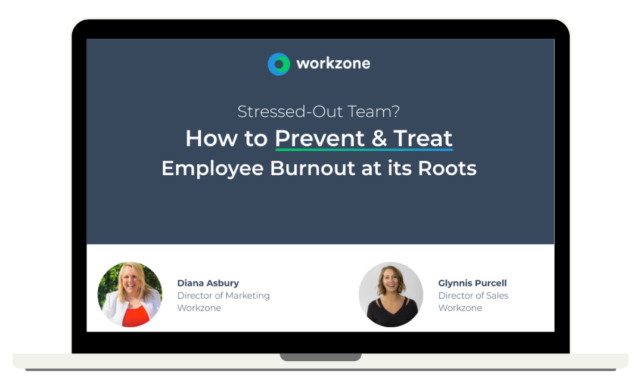The past 90 days have flown by since I took on the CEO role at Workzone. Since then, I’ve had the unique opportunity to have over 50 meetings with our customers. Each meeting was a deep dive into the experiences and challenges faced by Marketing and Operations leaders across various sectors—from Higher Education to Healthcare and Agencies to Financial Services.
While the primary aim was to better understand our customers’ experience with Workzone, what emerged went far beyond feedback. The conversations elevated a wealth of insights into the current state and future of project management—a space that continues to evolve rapidly in response to technological advancements and changing work environments.
Themes Reflecting the Future of Project Management
Reflecting on these discussions, I saw several key themes shaping today’s project management practices and workspaces.
1. The Persistent Threat of Burnout
Burnout remains a formidable challenge, exacerbated by a perfect storm of ad-hoc requests, escalating project dependencies, unrealistic timelines, and excessive meetings. Collectively detracting from valuable execution time. This leaves professionals feeling overwhelmed and under pressure.
To combat this, many of our customers are leveraging workload management tools to proactively foster balance, thus reducing burnout and increasing job satisfaction.
Did you know? Workzone did an entire webinar on combatting employee burnout!

2. The Multiplicity Dilemma
The issue of “multiples”—multiple requests from multiple stakeholders across multiple channels and executed via multiple systems—continues to plague workplace productivity.
However, there’s a silver lining: many teams are moving towards a consolidated system for managing work intake, organization, and execution to restore order and efficiency.
3. AI is yet to deliver on its promise
Despite the potential of Artificial Intelligence to revolutionize work, its current applications within project management remain nascent.
Many of our customers expressed “low confidence” in current AI solutions. This sentiment echoes a broader skepticism I’ve been hearing in industry circles, suggesting that many AI tools are searching for a problem to solve rather than solving existing problems. Of course, this is expected to change in the near future.
4. The Agile vs. Waterfall Debate
The traditional dichotomy between Agile and Waterfall methodologies is becoming increasingly irrelevant. Teams are discovering value in identifying the most effective pathways for turning ideas into plans and executing them rather than confining themselves to a project management framework. That journey flows through a combination of multiple project management frameworks depending on the job at hand.

5. Project Management Software without the “human component” is a recipe for disaster
While project management software can certainly be helpful in streamlining processes and facilitating communication, it cannot entirely address the challenges that arise in managing a project.
To achieve successful outcomes, the “human touch” is essential. All the more to address critical pillars like change management, process optimization, and cultural alignment that form the bedrock of successful project management.
6. The Pillars of Successful Projects
Lastly, there were five foundational elements to successful projects that repeatedly emerged from the conversations:
- Clear expectations with stakeholders (upfront)
- Clarity of scope
- Early identification and communication of dependencies
- A unified system for work management
- Continuous communication to keep stakeholders informed and aligned
Looking Ahead to the Future of Project Management
The journey through these 50 customer meetings has not only deepened my understanding of Workzone’s impact on today’s workplaces but also highlighted the broader themes and challenges within the project management domain. Solutions to some of these are already deeply integrated into Workzone’s Project Management Platform, which heavily centers on the “human component” (unlimited training & coaching) along with our software. However, it is clear to me that we still have a long way to go to help Marketing and Operations professionals overcome some of the challenges outlined above and beyond.
As I continue to engage with leaders shaping today’s workspaces, I look forward to uncovering further insights and sharing these learnings with our community.





